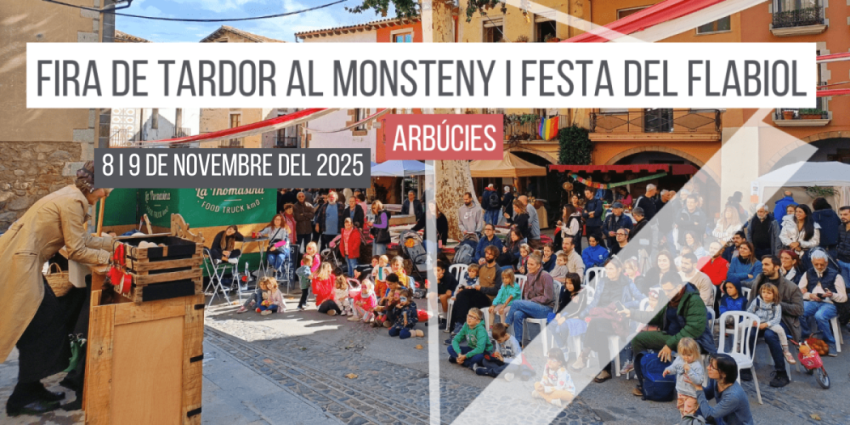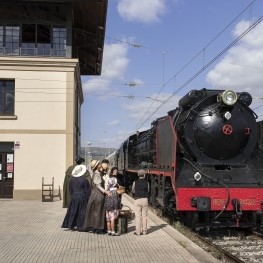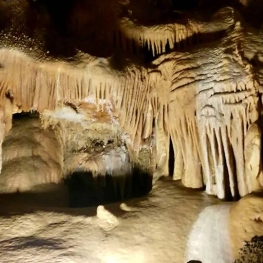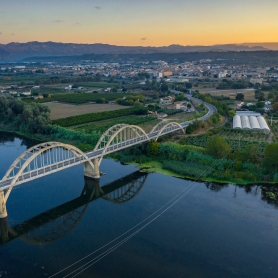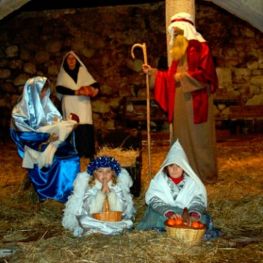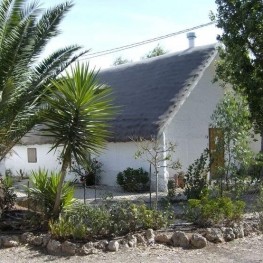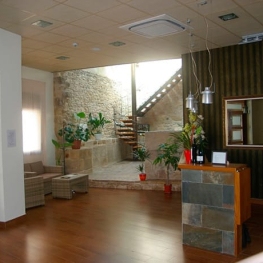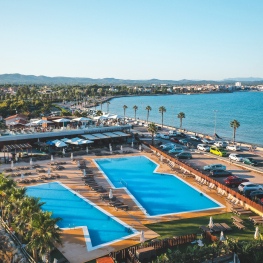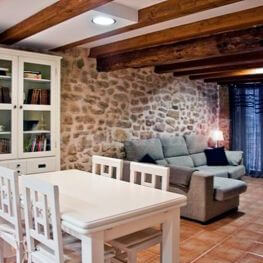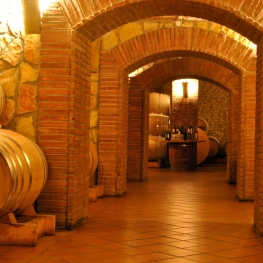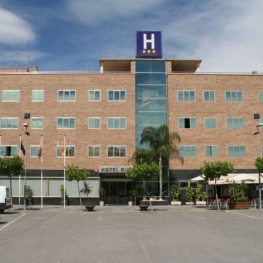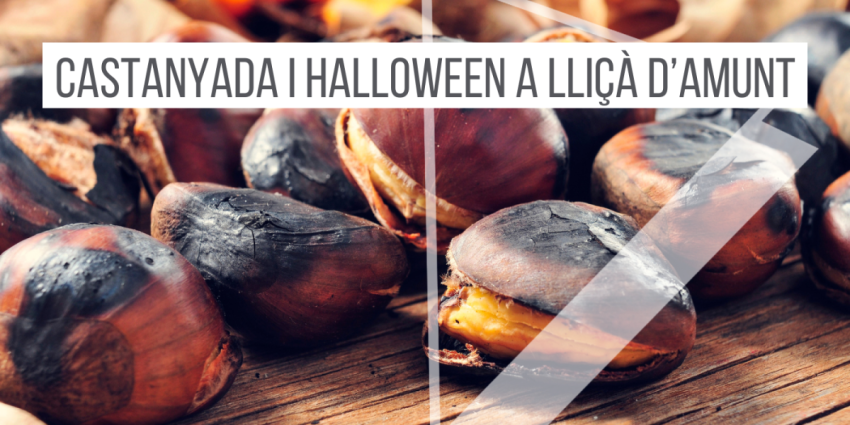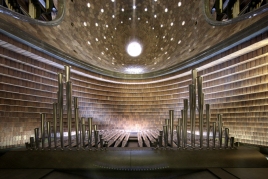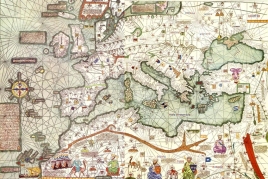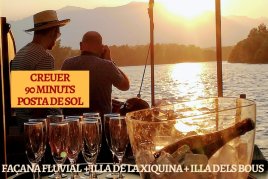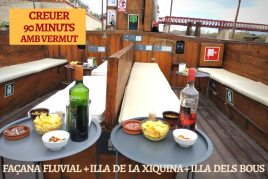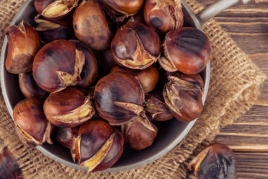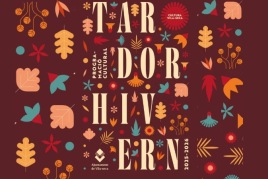Inside the Ebro river
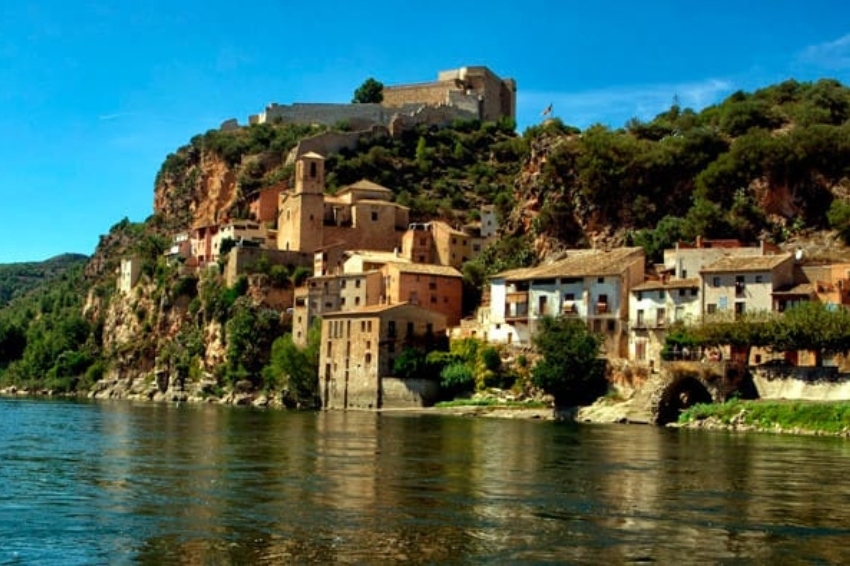
In contrast to the Delta del Ebro, internal land Tarragona noted for its dryness and its potent summer heat. Therefore, they are less attractive for tourism, linking this province with the beach. However, this region surrounded by hills and mountains has a large tourist content, not only for its natural heritage, which include the Sierra de las Cuevas and Cardó Benifallet, but also for its cultural and historical heritage, as the battle of Ebro , which determined the end of the Spanish Civil War.
We propose a journey through stunning scenery and little known Catalan geography has become a Biosphere Reserve by UNESCO.
Tortosa
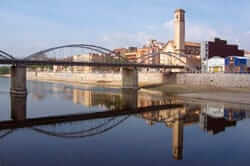 Declared a Historic-Artistic, capital of the Baix Ebre has an extensive history of conquests. Considered a strategic point, was taken by the Muslims, Aragonese, Castilian and French. Not surprisingly, this southern city of Catalonia came to control trade in corn and salt in the western Mediterranean. This hodgepodge of cultures gives the city a distinctive air where the Moorish, Renaissance, Baroque and Jewish currents meet.
Declared a Historic-Artistic, capital of the Baix Ebre has an extensive history of conquests. Considered a strategic point, was taken by the Muslims, Aragonese, Castilian and French. Not surprisingly, this southern city of Catalonia came to control trade in corn and salt in the western Mediterranean. This hodgepodge of cultures gives the city a distinctive air where the Moorish, Renaissance, Baroque and Jewish currents meet.
The importance of his past is symbolized by the Cathedral. Built on top of a mosque, and what had once been a Roman forum, became a cathedral and monastery in the twelfth century. Result of numerous works and extensions, its Romanesque architecture would become later in Gothic, until the eighteenth century Baroque façade obtained we can enjoy today.
It is the Chapel of Our Lady of the Film or Royal Chapel, named for their large size. Decorated with great luxury, as evidenced by its numerous frescoes and materials in it's grave Lluís de Tena, is bishop of Tortosa and president of the Generalitat of Catalonia (1617-1620).
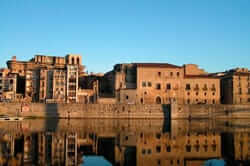 In the Renaissance up, Tortosa has one of the most important examples of civil architecture in Catalonia: the Royal Colleges, for education of the Moors. Your yard is considered unique because it represents all the kings of Aragon from the eleventh to the seventeenth century.
In the Renaissance up, Tortosa has one of the most important examples of civil architecture in Catalonia: the Royal Colleges, for education of the Moors. Your yard is considered unique because it represents all the kings of Aragon from the eleventh to the seventeenth century.
Climbing a raised area on the banks of the Ebro River found Suda Palace of Muslim origin. This ancient fortress acquired great relevance to be the center of the Taifa Kingdom. After suffering heavy occupations would finally used as the residence of the noble Catalan and Castilian kings.
Emphasize its tower three forms: circular, pentagonal and square, from where a stunning view of the Tarragona area is obtained. Currently the palace is a Parador Nacional.
Tivenys
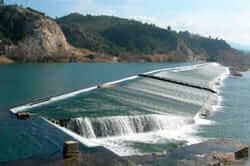 Following minor road T-301 arrived at a small village called Tivenys , whose history is unknown. It is known that was given to the Jews of Tortosa by Ramon Berenguer IV in the twelfth century to later be sold to the abbot of the Holy Cross.
Following minor road T-301 arrived at a small village called Tivenys , whose history is unknown. It is known that was given to the Jews of Tortosa by Ramon Berenguer IV in the twelfth century to later be sold to the abbot of the Holy Cross.
Despite its reduced size, Tivenys is distinguished by its parish church, dating from the eighteenth century, and Gothic, Byzantine and neoclassical influence, its chapel dedicated to the Virgen del Carmen, a half hour walk from the village, and the Municipal Park One of the most striking places in the area because of the magnificent vegetation growing on the banks of the Ebro.
Two kilometers towards Xerta , is the dam of Xerta, a work of hydraulic engineering s.XII declared a Cultural Asset of National Interest by the Generalitat of Catalonia. This dam, built diagonally across the width of the Ebro River, has a length of 375 meters and was created to bring water to crops in the area. The Iberian remains of the great defensive tower gives a singularity, as it is unique in the entire region.
Caves Benifallet
Before reaching the next town, Benifallet , we stumbled upon the caves of that name, two miles Tivenys .
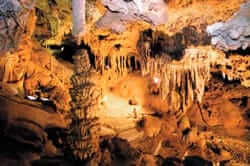 Discovered in 1968 by a group of Barcelona caving, consist of six caves, some of which remain Neolithic archaeological remains. At present only two are open to the public and not in its entirety, the Cave and the Cave of Two Meravelles. Through guided tours, you can see amazing formations that only nature with centuries of patience, you can create dropwise. Abundant and magnificent stalactites, stalagmites, huge columns, cast macaroni gours and a number of eccentric and banners grow inside the Earth.
Discovered in 1968 by a group of Barcelona caving, consist of six caves, some of which remain Neolithic archaeological remains. At present only two are open to the public and not in its entirety, the Cave and the Cave of Two Meravelles. Through guided tours, you can see amazing formations that only nature with centuries of patience, you can create dropwise. Abundant and magnificent stalactites, stalagmites, huge columns, cast macaroni gours and a number of eccentric and banners grow inside the Earth.
Benifallet
But Benifallet is not only known for its caves. The village itself has many tourist reasons to be visited, as Aldovesta archaeological sites belonging to the Iron Age, the Castellot Red Rock, settlement dating from the sixth century BC to the third, or the farmhouse Puppy, requiring memory to go back to times of Phoenicians, Iberians and Romans.
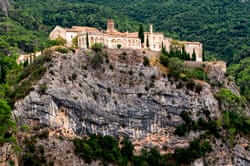 Of Arab origin, in the historic center of Benifallet converge buildings from different eras, from Moorish to more recent, as neoclassical. An example of the latter is its parish church, built one year before the start of the Spanish Civil War.
Of Arab origin, in the historic center of Benifallet converge buildings from different eras, from Moorish to more recent, as neoclassical. An example of the latter is its parish church, built one year before the start of the Spanish Civil War.
Going back centuries, we find the Romanesque chapel of s.XIII, where fresh that are still in perfect condition and the image of the Virgen de Dalt, patron of the place can be observed. Inside are two graves of the years 1298 and 1300.
Atop the Cardó massif is the former convent of San Hilario de Cardo, founded in the seventeenth century by the order of the Discalced Carmelites. Unfortunately, there are only a few feet of the thirteen chapels that formed the convent. The church, constructed later, now a museum. Near the convent in 1866, was created a spa that gave medicinal use Cardó river waters and, during the war, worked as a hospital on the Republican side. This time the popular festival of fifths, allowing youth fundraiser they were doing military service is still maintained.
Pas de Barca in llagut
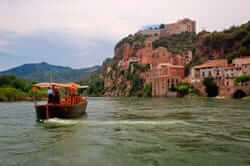 Taking the C-12, direction Mora d'Ebre , find the last ferry across the river Ebro river propelled only by the current of water, or llaüt llagut, carrying Benifallet to Miravet . This traditional craft of the area consists of a wooden platform attached to a metal cable attached to both sides of the river. It was used to transport people, animals and vehicles from one bank to another.
Taking the C-12, direction Mora d'Ebre , find the last ferry across the river Ebro river propelled only by the current of water, or llaüt llagut, carrying Benifallet to Miravet . This traditional craft of the area consists of a wooden platform attached to a metal cable attached to both sides of the river. It was used to transport people, animals and vehicles from one bank to another.
Used until the sixties, new infrastructure have contributed to its demise. Currently only two types of llaguts, that of Flix (Northern Province), which is electrically operated, and the Miravet , sailing without engine. Both for the enjoyment of tourists. It is certainly an experience to cross the Ebro llagut aboard and enjoy the expertise to overcome the current rower helped only by his pole.
Miravet
At the junction of secondary road we reached TV-3023 Miravet . The story of this Arab city then called Murabit is full of events that have been visible in its streets, buildings and offices. In fact, this city is best known for its pottery, which still thrives because of the many workshops that houses, which the Templar castle, one of the most acclaimed tourist attractions. This route will not refer to it because it is enshrined in the Castle Route in Catalonia .
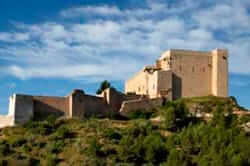 The old town, called Cap de la Vila, emerged as a vital point of the Muslim farmstead for nine centuries, until the arrival of the Christians in the s. XVII. All that time of Islamic domination has been demonstrated in its narrow streets, llaguts, oil mill, wheat and potter varnish, Moorish arches and Moorish mosque, which was part of the mosque. The entrance to the old case is performed by the call Motxo Portal, a passageway covered by a charming arch.
The old town, called Cap de la Vila, emerged as a vital point of the Muslim farmstead for nine centuries, until the arrival of the Christians in the s. XVII. All that time of Islamic domination has been demonstrated in its narrow streets, llaguts, oil mill, wheat and potter varnish, Moorish arches and Moorish mosque, which was part of the mosque. The entrance to the old case is performed by the call Motxo Portal, a passageway covered by a charming arch.
It is worth going to the viewpoint of the Sanaqueta, offering a breathtaking view over the Ebro river, meandering Tamarigar, Masia indemnity claim and the Moorish houses perched on the channel. It also allows us to see from afar the Renaissance Church of the Order of the Hospital, built, as usual, over the mosque and in which the consequences of the bombing it suffered after the famous Battle of the Ebro can still be seen. A loss of altarpieces and pictures, we must add the collision of a bomb on his dome.
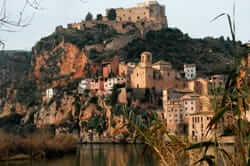 Inside the church you can see the Romanesque altar by the Knights Templar, collection of pottery Miravet , medieval iconography and an exhibition of photographs of the passage of the Republican troops in 1938.
Inside the church you can see the Romanesque altar by the Knights Templar, collection of pottery Miravet , medieval iconography and an exhibition of photographs of the passage of the Republican troops in 1938.
For those lovers of canoeing we strongly recommend these places where there is a wide range of sport. The placid waters of the Ebro river offer an ideal setting to practice.
You may also be interested in: Water and nature to enjoy with the five senses
What to do
Museu del Ferrocarril de Móra la Nova
Móra la Nova (a 8.8 Km)Located in the old railway facilities of Móra la Nova, where you…
Coves de Benifallet
Benifallet (a 2.9 Km)One of the best-known tourist options throughout the territory, made up of…
Pessebre Vivent de Jesús
Tortosa (a 1.8 Km)Living nativity scene represented in movement and voice, from the Catalan period…
Where to eat
L’Estany - Casa de Fusta
Amposta (a 21.2 Km)A restaurant serving regional cuisine, with a wide selection of the ancestral…
Restaurant Hotel Nou Moderno
Vilalba dels Arcs (a 18.2 Km)Hotel restaurant to enjoy the tranquility of Terra Alta and try the…
Where to sleep
Càmping Ampolla Playa - Taiga Delta de l'Ebre
L'Ampolla (a 14.9 Km)At the gateway to the Ebro Delta Natural Park, Camping Taiga Delta…
Ca la Leonor
Bot (a 11.9 Km)Rural house from 1880, renovated in 2012, preserving the original wooden beams…
Enoturisme Celler Piñol
Batea (a 21.8 Km)Celler Piñol is a family winery located in Batea, dedicated to producing…

